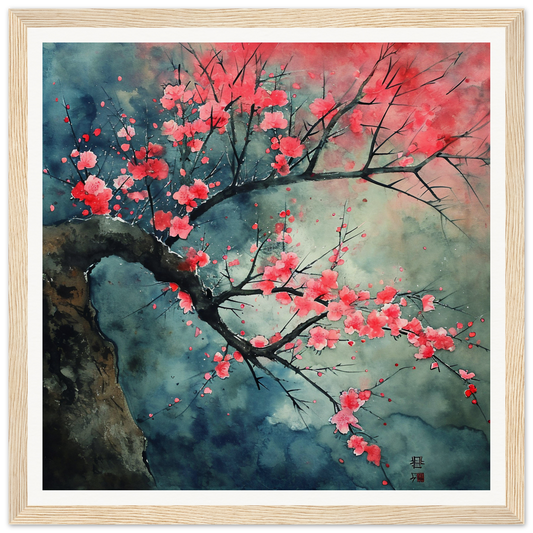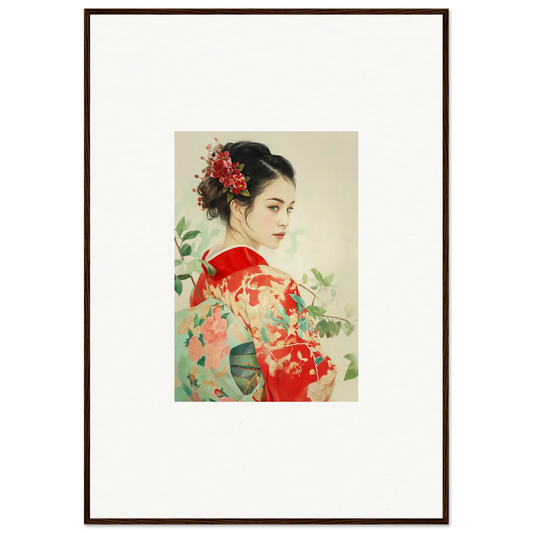
Takashi Murakami: Blending Anime and Superflat in Art
Share
Takashi Murakami: Blending Anime and Superflat in Art
Overview
Introduction to Takashi Murakami
Takashi Murakami is a renowned Japanese contemporary artist known for his unique blend of anime and superflat in his art. Born in Tokyo in 1962, Murakami studied traditional Japanese painting before incorporating elements of popular culture into his work. He is credited with coining the term 'superflat,' which refers to the flat and two-dimensional aesthetic found in both traditional Japanese art and contemporary anime. Murakami's art often combines vibrant colors, playful imagery, and references to consumerism and mass production. His work has gained global recognition and popularity, inspiring a new generation of artists. However, it has also faced critiques and controversies for its commercialization and appropriation of Japanese culture. Despite this, Murakami's unique contribution to contemporary art continues to evolve and remain relevant, shaping the future of the art world.
The Influence of Anime in Murakami's Art
Anime has played a significant role in shaping Takashi Murakami's artistic style. Drawing inspiration from the vibrant and dynamic world of Japanese animation, Murakami incorporates elements of anime into his artwork. His characters often feature exaggerated expressions and fantastical creatures, reminiscent of the anime aesthetic. Additionally, Murakami's use of bold and vibrant colors, which are commonly seen in anime, adds a sense of energy and playfulness to his pieces. By blending anime with his unique artistic vision, Murakami creates a visual language that appeals to both anime enthusiasts and art lovers alike. This fusion of anime and contemporary art has become one of the defining characteristics of Murakami's work.
The Concept of Superflat
The Superflat concept, coined by Murakami himself, refers to a postmodern art movement that merges traditional Japanese art with contemporary pop culture. It is characterized by its flat, two-dimensional aesthetic, influenced by the visual style of anime and manga. Murakami's use of bright colors and bold lines in his artworks reflects the vibrant and playful nature of the Superflat concept. By incorporating elements of consumerism and mass production, Murakami critiques the commercialization of art and explores the relationship between high and low culture.
Artistic Style
Combining Traditional Japanese Art with Pop Culture
Takashi Murakami's artistic style is characterized by his unique ability to seamlessly blend traditional Japanese art with elements of pop culture. He draws inspiration from traditional Japanese art forms such as ukiyo-e prints and Buddhist iconography, and combines them with contemporary references to anime, manga, and otaku culture. This fusion of traditional and modern elements creates a dynamic visual language that is both visually striking and culturally significant. Murakami's use of vibrant colors and playful imagery further enhances the impact of his work, inviting viewers into a world of fantasy and imagination. By exploring the intersection of traditional art and popular culture, Murakami challenges the boundaries of art and expands the possibilities of artistic expression. His innovative approach has made a significant contribution to contemporary art and has inspired a new generation of artists to explore the fusion of traditional and contemporary influences.
Vibrant Colors and Playful Imagery
One of the defining characteristics of Takashi Murakami's artistic style is his use of vibrant colors and playful imagery. His works often feature bold and eye-catching hues that create a sense of energy and excitement. Murakami's use of bright colors is reminiscent of the vibrant aesthetics found in anime and manga, further highlighting his connection to popular culture. In addition to his vibrant color palette, Murakami incorporates playful and whimsical imagery into his art. He often depicts characters and motifs inspired by anime, manga, and Japanese folklore, creating a sense of fantasy and escapism. This combination of vibrant colors and playful imagery gives Murakami's art a visually striking and captivating quality.
Exploration of Consumerism and Mass Production
In his exploration of consumerism and mass production, Takashi Murakami employs a unique blend of traditional Japanese art and contemporary pop culture. His vibrant and playful imagery, characterized by bold colors and captivating characters, reflects the influence of anime and manga. Murakami's art often incorporates elements of consumer culture, such as logos and brand icons, highlighting the pervasive nature of consumerism in society. Through his work, he raises questions about the commodification of art and the impact of mass production on artistic expression. Murakami's exploration of consumerism and mass production has made him a prominent figure in the contemporary art world, inspiring a new generation of artists to challenge traditional notions of art and embrace popular culture.
Impact and Legacy
Global Recognition and Popularity
Takashi Murakami's unique artistic style and innovative approach have garnered global recognition and popularity. His vibrant and whimsical artwork has captivated audiences around the world, leading to numerous exhibitions and collaborations with renowned brands. Murakami's ability to blend elements of traditional Japanese art with contemporary pop culture has resonated with a diverse range of viewers, from art enthusiasts to anime fans. His work has become iconic, influencing a new generation of artists who strive to emulate his distinctive aesthetic. Despite some critiques and controversies, Murakami's art continues to transcend boundaries and inspire admiration from both the art world and the general public.
Inspiring a New Generation of Artists
Takashi Murakami's groundbreaking art has had a profound impact on a new generation of artists. His unique blend of anime, pop culture, and traditional Japanese art has inspired countless artists to explore new possibilities and push the boundaries of their own creativity. Murakami's vibrant colors, playful imagery, and exploration of consumerism and mass production have become hallmarks of his style, influencing artists to embrace boldness and experimentation. His ability to bridge the gap between high and low art has also encouraged artists to challenge traditional notions of artistic hierarchy. Murakami's influence can be seen in the works of emerging artists around the world, who continue to draw inspiration from his innovative approach. By breaking down barriers and encouraging artistic freedom, Murakami has created a lasting legacy that will continue to inspire future generations of artists.
Critiques and Controversies
Despite his immense success, Takashi Murakami's art has not been without its fair share of critiques and controversies. Some critics argue that his work is too commercial and lacks depth, as it often incorporates popular culture and consumerist themes. Others question the cultural appropriation in his art, particularly his use of traditional Japanese imagery and motifs. Additionally, Murakami has faced criticism for his collaborations with luxury brands, which some view as selling out. However, supporters of Murakami argue that his fusion of high and low art is a deliberate commentary on the contemporary art world and consumer culture. Overall, the critiques and controversies surrounding Murakami's art highlight the ongoing debate about the role of popular culture and commercialism in the art world.
Conclusion
Murakami's Unique Contribution to Contemporary Art
Takashi Murakami has made a significant impact on the contemporary art world with his unique blend of anime and superflat aesthetics. His fusion of traditional Japanese art with pop culture elements has created a visually striking and culturally relevant body of work. Murakami's vibrant colors and playful imagery have captivated audiences and challenged the boundaries of traditional art forms. Additionally, his exploration of consumerism and mass production has sparked important conversations about the intersection of art and commerce. Murakami's contributions have not only earned him global recognition and popularity but have also inspired a new generation of artists to push the boundaries of their own creativity. While his work has faced some critiques and controversies, there is no denying the lasting impact and continued relevance of Murakami's art. As he continues to evolve and experiment with new concepts and techniques, the future looks bright for this influential artist.
Continued Relevance and Evolution of his Art
Takashi Murakami's art continues to be relevant and evolve in the contemporary art world. His unique blend of anime and superflat aesthetics has captivated audiences globally. Murakami's exploration of consumerism and mass production resonates with the consumer-driven society we live in today. His vibrant colors and playful imagery create a visually stimulating experience for viewers. Additionally, Murakami's art has inspired a new generation of artists who are pushing the boundaries of traditional art forms. However, his work has not been without its critiques and controversies, as some argue that it perpetuates a commercialized and commodified version of art. Despite this, Murakami's contributions to contemporary art are undeniable, and his art will continue to shape the future of the art world.
Looking Towards the Future
As Takashi Murakami continues to push the boundaries of contemporary art, his influence and impact are likely to extend far into the future. With his unique blend of anime, superflat aesthetics, and exploration of consumerism, Murakami has carved out a distinct place for himself in the art world. His vibrant colors, playful imagery, and thought-provoking themes resonate with audiences around the globe. Murakami's ability to bridge the gap between high and low art, as well as his innovative use of materials and techniques, have inspired a new generation of artists. Despite facing critiques and controversies, Murakami's art remains relevant and continues to evolve, reflecting the ever-changing landscape of society. As we look towards the future, we can expect Murakami to continue challenging conventions and pushing the boundaries of art, leaving a lasting legacy for generations to come.































